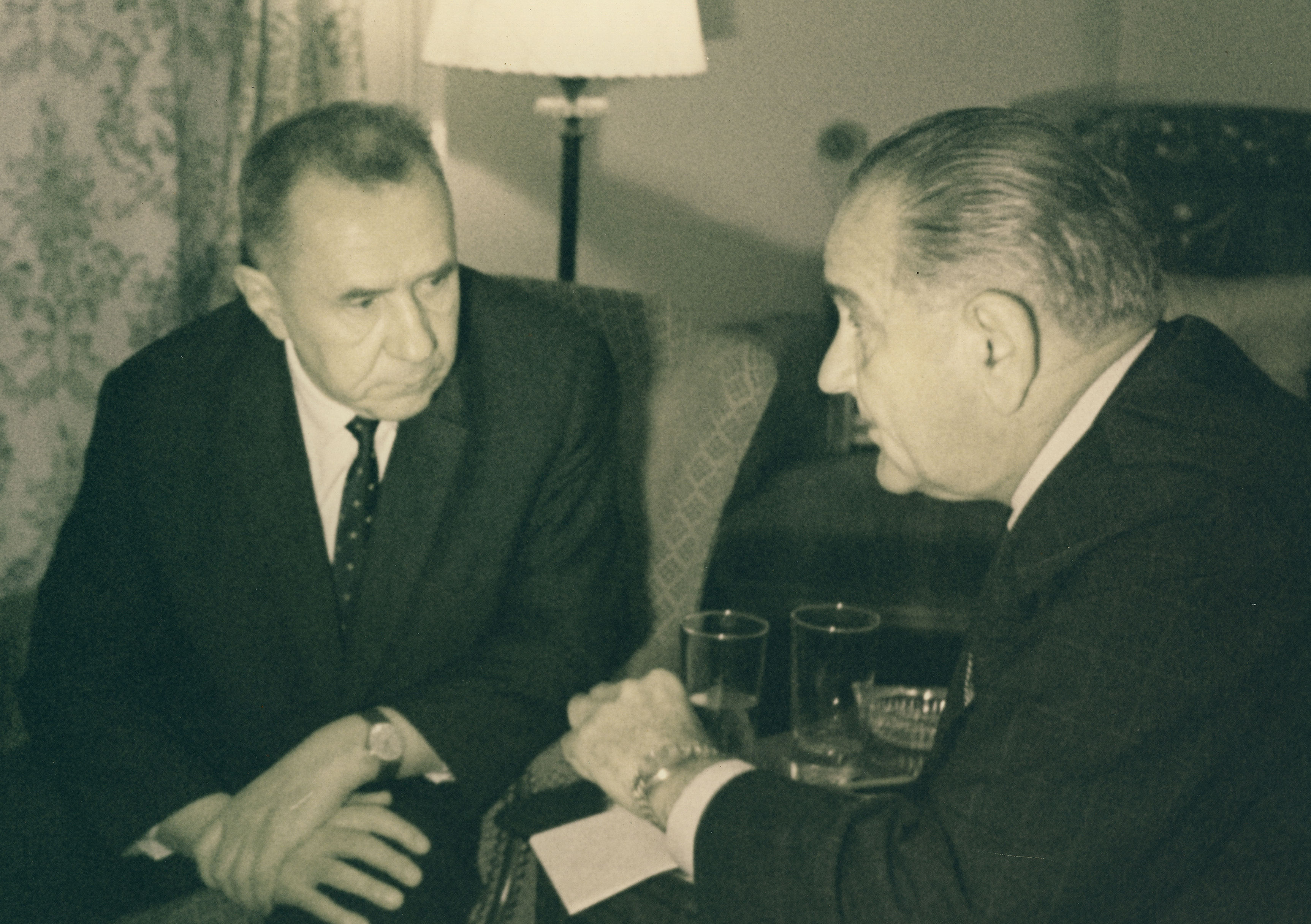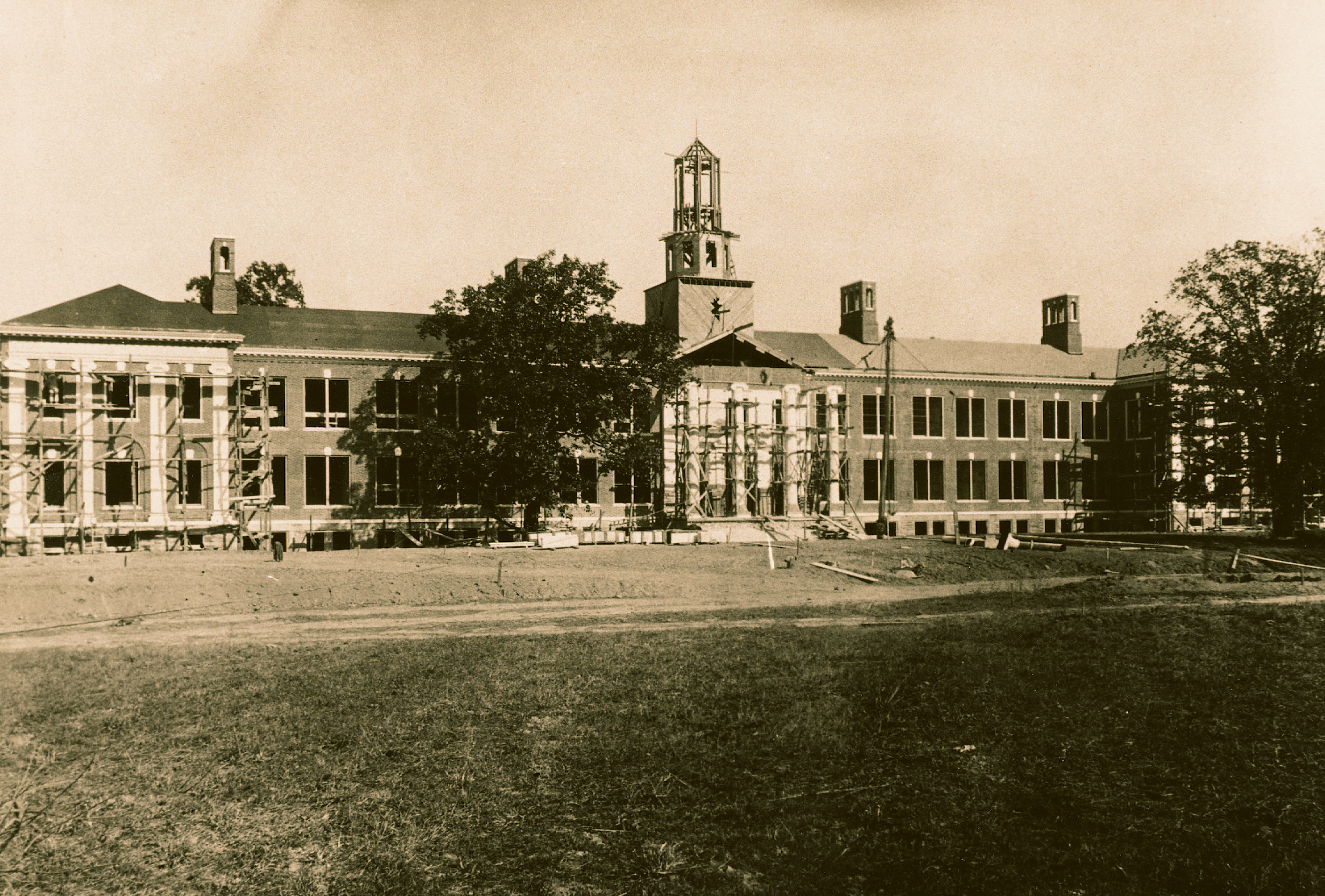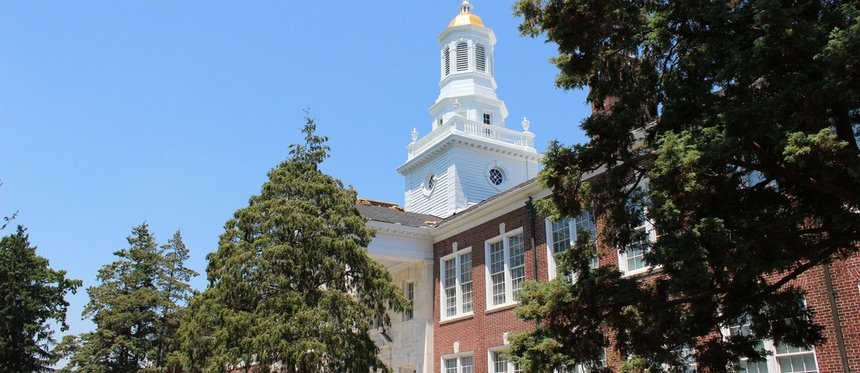Rowan History
Rowan History
From Normal to Extraordinary: The History of Rowan University
In the course of 100 years, our diplomas have borne five names for our institution: New Jersey State Normal School at Glassboro (1923), New Jersey State Teachers College at Glassboro—also known as Glassboro State Teachers College (1937), Glassboro State College (1958), Rowan College of New Jersey (1992) and Rowan University (1997).
As the successive names suggest, the institution has continually reinvented itself. What started more than a century ago as a small normal school to prepare teachers for South Jersey classrooms is today a multicampus, comprehensive public research university boasting prestigious accreditations and Carnegie R2 (high research activity) status.
Rowan is one of just two universities in the nation to offer M.D., D.O. and D.V.M. degrees. In addition to the main Glassboro campus and long-standing Camden campus, it has also developed Rowan Online and South Jersey Technology Park.
With three medical schools, a school of nursing and health professions, plus translational and biomedical sciences and partnerships with leading health care systems and hospitals throughout the state, Rowan is a health care education leader and innovator.
Tremendous growth and opportunity
Begun with just 236 students and 16 faculty, Rowan today enrolls nearly 24,500 students and employs 4,300 people. It offers 126 bachelor’s degrees, 69 master’s degrees, 21 doctoral/professional (medical) degrees and dozens of certificates through its colleges and schools:
- William G. Rohrer College of Business
- Ric Edelman College of Communication, Humanities & Social Sciences
- Henry M. Rowan College of Engineering
- College of Education
- College of Science & Mathematics
- College of the Arts
- School of Earth & Environment
- School of Innovation & Entrepreneurship
- Cooper Medical School of Rowan University
- Shreiber School of Veterinary Medicine
- Virtua Health College of Medicine & Life Sciences of Rowan University
- Rita & Larry Salva School of Nursing & Health Professions
- Rowan-Virtua School of Osteopathic Medicine
- Rowan-Virtua School of Translational Biomedical Engineering & Sciences
- John H. Martinson Honors College
Rowan is noted for class sizes similar to those of smaller, private schools. Exceptionally gifted students find even greater academic challenge in the Bantivoglio Honors program within the interdisciplinary Martinson Honors College. Among Rowan’s brightest, 27 students have earned coveted Fulbright scholarships since 2000. Others continue to win prestigious Goldwater and Boren awards.

Accolades and headlines
Since 2001, Rowan University consistently has placed in regional and national indexes, including The Chronicle of Higher Education 2025 Almanac, which named Rowan the fastest-growing public doctoral institution in the Northeast, its eighth year in the top 10 nationally.
Also in 2024-2025, U.S. News & World Report again ranked Rowan among the nation’s top 100 public universities, plus noted advances in “Best” categories for value, veterans and social mobility. Even more academic programs earned national recognition in undergraduate and graduate categories.
Two of Rowan’s most celebrated moments came during events that earned international attention. While still called Glassboro State College and best known for excellent teacher education programs, the institution in 1967 became the focus of the world when it hosted the landmark summit conference between U.S. President Lyndon B. Johnson and Soviet Premier Alexei Kosygin. Today, Hollybush Mansion displays memorabilia from the momentous international event, as well as local history.
The institution again gained worldwide attention in 1992 when entrepreneur Henry Rowan and his wife, Betty, pledged $100 million to the school. The gift would be the largest to date made to a public institution, granted with the request to transform engineering education. The gift allowed the school to create the award-winning Henry M. Rowan College of Engineering and served as a catalyst for growth and change throughout the institution, renamed to honor its donors.

Milestones and goals
Rowan’s extraordinary growth and success reflect the University’s determination to anticipate and address changing demands in education, health care, business and more.
Guided by its commitment to increase access to affordable, high-quality education and drive the regional economy, Rowan continues to distinguish itself as a public higher education leader. An independent study released in 2024 quantified the institution’s annual statewide economic impact at $2.91 billion, with $12 generated for each dollar invested at Rowan.
Rowan’s resources and influence are driving the region’s economic growth, especially through public-private partnerships, research collaboration and commercialization. Drawing on institutional agility, strength and vision that continue to shape its future, Rowan University has, in just the last decade:
- doubled enrollment to serve more students, while maintaining quality;
- invested in, partnered and encouraged more than $1.8 billion in construction and design projects on and around Rowan campuses that built new academic, research and clinical facilities, plus private and public development;
- increased annual research awards from $9.10 million to nearly $81.2 million and earned Carnegie R2 research status for high research activity. The classification makes possible more undergraduate and graduate programs and enhances Rowan’s increased focus on research initiatives and developing marketable solutions for real-world problems;
- completed the $426 million public-private redevelopment project that created housing, classrooms, professional and retail space, increased employment and revitalized the corridor that joins the Glassboro main campus to the historic downtown;
- affiliated with Virtua Health to create an academic health partnership that is transforming and advancing medical and health sciences education, clinical care and research through Virtua Health College of Medicine & Life Sciences of Rowan University;
- established New Jersey’s first veterinary school, with its inaugural class enrolled in Fall 2025 and supported by scholarships endowed by business leader and animal advocate Gerry Shreiber;
- preserved a historic tract in Mantua Township, the site of paleontology research for decades, and opened the globally significant Jean & Ric Edelman Fossil Park & Museum in March 2025, supported by the alumni donors’ commitment to STEM education;
- exceeded one ambitious fundraising goal with gifts in excess of $120 million and is on track to add $240 million in a second campaign to support students, advance innovation and build the University of the Future;
- established Cooper Medical School of Rowan University, offering the first four-year M.D. program in southern New Jersey. The innovative curriculum and urban-based mission of the school address the state’s most pressing medical education challenges;
- earned approval to expand enrollment at Rowan-Virtua School of Osteopathic Medicine, nationally known for clinical services and research supported by prestigious private and public funders;
- opened Discovery Hall and new buildings for Henry M. Rowan College of Engineering and William G. Rohrer College of Business to meet enrollment demands and develop more partnerships with business, industry, K-12 schools and the community at large;
- partnered with community colleges in the region to improve access and affordability. While remaining independent, the institutions changed their names to Rowan College of Gloucester County (2014), now Rowan College of South Jersey, and Rowan College at Burlington County (2015) to reflect the closer ties;
- opened a new facility to expand osteopathic medical education and clinical services in Sewell and opened a new clinical facility in Cumberland County.
Poised for the future
Building on its proud and proven record for more than 100 years, Rowan continues to develop students to help lead New Jersey’s bright future. Many are the first in their family to earn a college degree (first-generation college students make up about a quarter of enrollment) and most will be long-term New Jersey residents, helping to build thriving communities and businesses as they invest themselves in their neighborhoods and professions.
With a remarkable history, proud alumni, able partners and extraordinary potential, Rowan University is dedicated to leading progress, creating opportunities and encouraging excellence.
This is the legacy of Rowan University. This is the pride of all who are part of the Rowan community.

